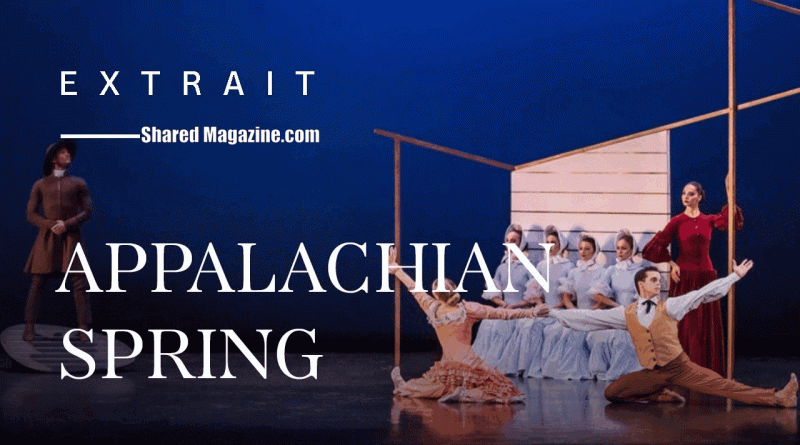Appalachian Spring: A Timeless Ode to American Heritage
Introduction
Appalachian Spring is a ballet masterpiece that stands as a quintessential representation of American culture and identity. Created by the renowned composer Aaron Copland, this composition has left an indelible mark on the world of classical music.
History of Appalachian Spring
Aaron Copland composed Appalachian in 1944 upon commission from the choreographer and dancer Martha Graham. The ballet premiered on October 30, 1944, at the Library of Congress in Washington, D.C. Its debut was met with immense praise, winning the Pulitzer Prize for Music in 1945.
Musical Composition
Appalachian is celebrated for its evocative themes and rich musical tapestry. Copland masterfully weaves together traditional American folk melodies with original motifs, creating a captivating sonic landscape. The composition features a diverse instrumentation, including strings, woodwinds, brass, and percussion.
Influence and Legacy
The influence of Appalachian Spring extends far beyond the realms of classical music. Its profound impact on American culture has solidified its status as a cultural touchstone. Copland’s fusion of folk elements with contemporary classical techniques paved the way for a new era of American music.
Appalachian Spring Today
Decades after its inception, Appalachian continues to captivate audiences around the world. Its timeless themes of hope, resilience, and the pioneering spirit resonate deeply with contemporary audiences. The ballet has been adapted for various mediums, including orchestral performances and concert suites, ensuring its enduring relevance.
Cultural Significance
Appalachian holds immense cultural significance as it encapsulates the essence of American heritage. Its portrayal of rural life, community, and the pioneering spirit resonates deeply with audiences across generations. Through its music and choreography, the ballet celebrates the rich tapestry of American culture, paying homage to the resilience and determination of the people who shaped the nation.
Collaborative Artistry
The creation of Appalachian Spring was a collaborative endeavor that brought together the talents of composer Aaron Copland and choreographer Martha Graham. Their partnership resulted in a seamless fusion of music and dance, with each element complementing and enhancing the other. Appalachian serves as a testament to the power of collaboration in the arts, showcasing how interdisciplinary teamwork can yield truly remarkable works of art.
Evocative Themes
One of the most striking aspects of Appalachian Spring is its evocative themes, which capture the essence of the American experience. From the optimism of new beginnings to the struggles of everyday life, Copland’s music vividly portrays a range of emotions and narratives. The ballet’s narrative unfolds through a series of vignettes, each one painting a poignant picture of life in rural America during the early 20th century.
Musical Structure
Appalachian Spring is structured as a suite of variations on a Shaker melody, “Simple Gifts,” which serves as the ballet’s main theme. Copland ingeniously weaves this melody throughout the composition, transforming it with each iteration to convey different moods and emotions. The music builds gradually, reaching moments of breathtaking beauty and intensity before returning to a sense of quiet contemplation.
Enduring Legacy
As one of Copland’s most enduring works, Appalachian Spring continues to inspire and captivate audiences worldwide. Its timeless themes and evocative melodies ensure its enduring relevance in the world of classical music. From its humble beginnings as a ballet commissioned for Martha Graham’s dance company to its status as a beloved masterpiece of American music, Appalachian Spring stands as a testament to the enduring power of art to transcend time and place.
Conclusion
In conclusion, Appalachian Spring stands as a testament to the enduring power of American artistry. Through its poignant melodies and evocative storytelling, it continues to inspire generations of musicians and audiences alike.
FAQs
What inspired Aaron Copland to compose Appalachian Spring?
Aaron Copland drew inspiration from the American landscape and the pioneer spirit that defined the nation’s identity.
Is Appalachian Spring solely a musical composition?
No, Appalachian Spring was originally composed as a ballet with choreography by Martha Graham.
How does Appalachian Spring reflect American culture?
Through its incorporation of traditional folk melodies and themes of American optimism and resilience.
Has Appalachian Spring been adapted for other art forms?
Yes, the composition has been adapted for orchestral performances, concert suites, and even film scores.
What is the significance of the title “Appalachian Spring”?
The title evokes imagery of the Appalachian Mountains and the spirit of renewal and rebirth associated with springtime.



